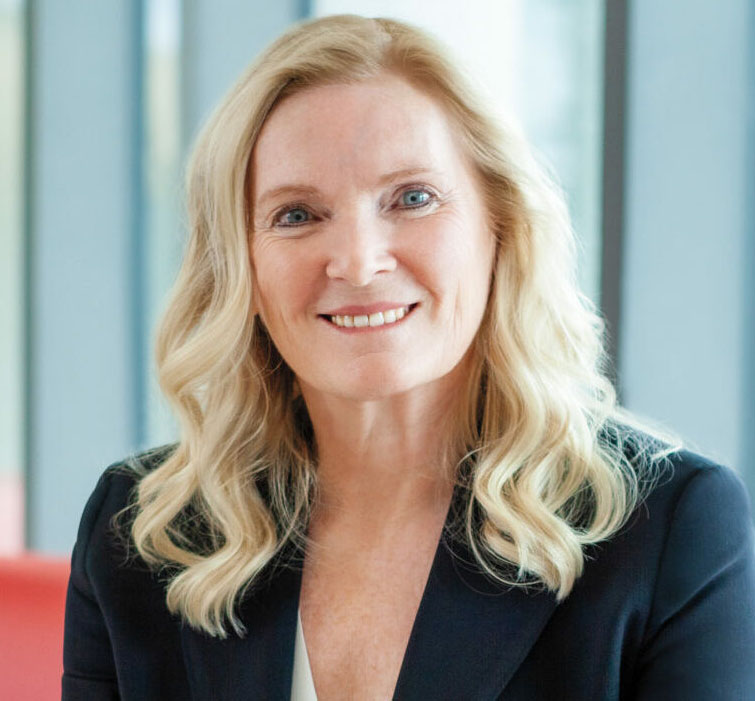
York University's financial challenges and the steps needed to address its structural deficit were the focus of a recent community information session held on April 1 with more than 1,000 community members in attendance.
In her opening remarks, President and Vice-Chancellor Rhonda Lenton reaffirmed the University's commitment to transparency before providing the budget update.

The University is currently projecting a deficit of $100 million for 2024-25 caused primarily by external factors that have created a significant strain on resources. These include the lingering effects of the COVID-19 pandemic, ongoing geopolitical conflicts, high inflation and the recently expanded federal cap on international student enrolment. Additionally, the Ontario government's 10 per cent tuition cut in 2019-20 and subsequent tuition freeze, combined with the lowest per-student grant revenue in the country, have significantly affected the University's financial position.
The cumulative impact of the domestic tuition cut and freeze has reached $680 million since 2019, with domestic tuition revenue losses amounting to $102 million for 2024-25 alone. International tuition revenue has also been severely affected, with losses of $64 million for the current academic year and an expected cumulative loss of $335 million by 2026-27 due to reduced student enrolment in 2024-25 and 2025-26.
"Across the sector, and at York, these circumstances have created unprecedented financial pressure," says Lenton. "We must continue to advocate alongside our sector partners for increased government support. At the same time, it is imperative that we address the gap between our declining revenue and our expenditures. Administrative efficiencies and other cost-cutting measures will be necessary, but enrolment recovery is key.
“York is well-positioned to grow the student population by leveraging the Markham Campus for the increase in 18- to 22-year-olds in York Region, advancing initiatives outlined in the York University Forward Action Plan to enhance program quality, and responding to the emerging talent needs in areas such as digital technologies, medicine and entrepreneurship. Continuing to strengthen our research and innovation efforts is also important for enhancing our reputation as is our collegial engagement with each other and our partners.”
In addition to reviewing revenue, the presentation shared during the session provided information about the major expenditure categories including compensation costs. As can be seen below, just over 70 per cent of total University expenses are tied to salaries across all employee groups, with operating expenses and financial aid making up the rest.

The data also show that expenses outpaced revenue by nearly $80 million in 2023-24, with eight of 10 Faculties facing in-year deficits in 2024-25.
The University has implemented several initiatives to address the cost associated with increased salaries. Along with an essential hiring program, savings measures include a deferral of the May 1, 2025 across-the-board salary increase for Confidential, Professional and Managerial (CPM) employees. The University sought a similar one-year deferral with YUFA-represented faculty members, but agreement was not reached. Senior executives and CPM employees who have a component of their salary tied to performance will also see a 25 per cent reduction of that component for 2024-25.
Many colleagues will be aware that the salaries of the president and the vice-presidents have been frozen since 2016 with the exception of a one-time-only base salary adjustment in 2024-25 to reflect changes in the sector over the previous eight years. These salaries remain frozen for the foreseeable future although small fluctuations are possible resulting from performance evaluations.
A key savings strategy and principle has been to prioritize voluntary workforce reduction measures. Voluntary Exit Programs (VEP) offered during 2024-25 to CUPE 1356- and YUSA-represented employees, as well as to CPM employees, resulted in 173 departures and approximately $15.5 million in savings expected in 2025-26.

Laina Bay-Cheng, vice-president equity, people and culture, pointed out that while the exit programs for staff yielded needed savings, “we also have to recognize what a major undertaking they were: for those who guided the programs; for those who opted for an exit program after giving the University so much over their careers; and for those who remain here, continuing to move York forward.”
In Summer 2024, Voluntary Separation Agreement opportunities, including lump sum payouts of $100,000 to $125,000, were made available by the deans and principal to YUFA-represented faculty members at or above normal retirement age. However, of the 197 faculty members who were then eligible for the opportunity, only three pursued it.
Although savings have been realized through the voluntary exit programs for non-academic staff members, there is still significant ground to cover to resolve the University’s budget deficit. The University will continue exploring possible cost-reduction measures along with possibilities for revenue generation.
The 17 interconnected projects in the York U Forward Action Plan remain central to the University's financial recovery strategy through both cost-reduction measures and revenue generation. The plan aims to maintain York’s positive trajectory in realizing the aspirations of the University Academic Plan 2020-2025 while ensuring long-term financial sustainability. The Forward Action Plan incorporates all the recommendations of the Ontario auditor general's "Value-for-Money" assessment and has been fully aligned with the University’s broader planning framework, including the institutional Integrated Resource Plan overseen by the president and vice-presidents (PVP IRP).
“This is a challenging time and a period of uncertainty for many,” acknowledges Lenton. “The community information session was an important opportunity for community members to hear directly from senior leadership, to ask questions and to provide input about the plan to achieve a balanced budget over the next few years while ensuring that we continue to advance York’s vision and priorities. We will share updates as plans and actions progress.”
The University community is encouraged to visit the York U Forward Action plan website for further details. The full webcast of the community information session is available to York community members.
